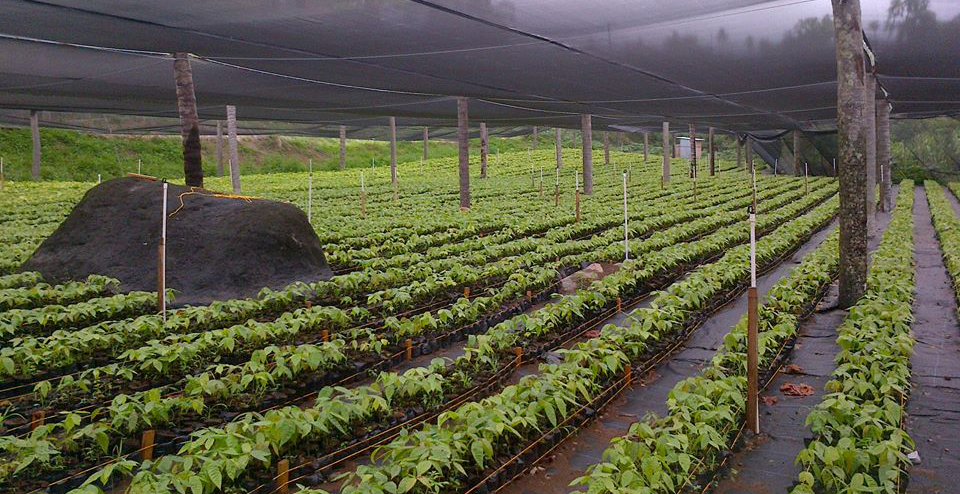The 19 employees of the St. Vincent Cocoa Company have been thrown on the breadline, while the investments of several farmers remain uncertain as the company informed the government this week that is it ceasing operations.
A well-placed source has told I-Witness News that the government was informed of the development on Thursday.
The development comes even as farmers have invested time and efforts in cocoa cultivation since the company was established in 2011.
Many of the cocoa planted since then have begun to produce fruits and farmers were being paid EC$1.36 per pound of wet weight and $3.40 per pound of dry weight for their cocoa beans.
The St. Vincent Cocoa Company was pitched as intending to re-establish the cocoa industry in St. Vincent and the Grenadines, using sustainable agricultural methods.
The source could not disclosure the reason(s) for the closure of the company, but told I-Witness News that its owners are said to have decided to leave for the state the approximately EC$1 million in assets they have in SVG.
The assets are said to include vehicles and a nursery for cocoa plants.

In the lead-up to the 2010 general elections, former Prime Minister, Sir James Mitchell, an agrarian, pitched cocoa as a potential money earner for the Vincentian economy.
The Unity Labour Party, led by Prime Minister Ralph Gonsalves, attempted to rubbish the idea, but on Aug. 12, 2011 signed an agreement with Amajaro Trading Limited, one of the world’s largest cocoa companies.
The 50-year agreement, which qualified for review after 20 years, gave Amajaro exclusivity in SVG to buy cocoa beans, in wet and dry bean form and to perform all sales and marketing of SVG cocoa within the period of the agreement.
The exclusivity clause, however, made exception for cottage industry persons selling cocoa for consumption in St. Vincent.
According to material disseminated by the Cocoa Company, by November 2012, 129 acres of demo-plots were cultivated and 50 acres of old cocoa fields were also rehabilitated through a pruning programme, in collaboration with the Ministry of Agriculture.
Two shade houses were built on the windward side of St. Vincent to house cocoa seedlings and a nursery in Orange Hill.
The nursery was also used as a shade house and for grafting and propagation of new seedlings.







In this day and age when cocoa is being touted as an aphrodisiac and health food; why are they shutting down this livelihood for our people? I would like to be kept abreast of these developments
This was inevitable.
The global process of agricultural development over the past 200 years has been the consolidation of small holdings into larger and larger holdings. Mega-agriculture in developed and developing countries has seen both a huge decline in the number of farmers together with a huge increase in the number of vast farms, all in the name of economies of scale and profitability. This is why food is so cheap in comparison to other items in places like North America and Western Europe.
In places like SVG, a reverse process has taken place since slavery ended in 1838. The cry of “land for the landless” and the bankruptcy of the sugar estates has seen the subdivision of the plantations into tiny subsistence peasant holdings together with a steady decline in export agriculture punctuated by brief boom periods when peasants and the constantly shrinking plantation sector tried their hand with export cash crops like arrowroot, cotton, tobacco, and bananas.
Cocoa has simply come and gone more rapidly than any other export cash crop.
This is why peasant cultivation is no answer to SVG’s agricultural woes: a quick perusal of national statistics shows that the higher the proportion of farmers there is in a country, the poorer that country is.
One of the reasons our ruling regime has repeatedly given for building an international airport is to quickly ship fresh agricultural produce overseas. The small-scale and lack of international competitiveness of Vincentian produce show that this rationale has no validity.
Hasn’t the Ministry of Agriculture taken over the operations of the Cocoa Company?
Why wasn’t this mentioned in the article?
Think it have something to do with Armajaro being sold…
http://www.bloomberg.com/news/2013-11-11/armajaro-trading-agrees-to-merge-into-ecom-agroindustrial.html
I have the complete answer to this matter, and also the saving grace and fortune making of the Cocoa project in SVG.
But I will not give it up until this nasty Marxist government is replaced. I do not want to give up something they will claim as theirs.
Was this cocoa new venture also established on the Leeward side if the island? I spent more than 4 months in Layou and didn’t notice any action there. Incidentally, there are lots of available lands that could have been utilized for the cocoa production. I have some lands with the old cocoa and was watching for any action in the area, so I could have offered my lands to help out the process.
My bet is Ralph try to tell the people how to run they business and who to give jobs too.
The people couldn’t handle it any more so they pack up.
All of SVG’s problems have one thing in common. (the big belly man)